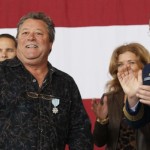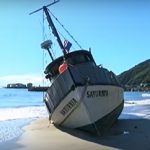The Case of the Poisoned Fish, by Sidney B. Silverman
 In the mid-1980s, East Hampton’s summer and year-round weekend population was growing rapidly. The demand for water views in particular was enormous, and the seemingly endless construction of new homes along the shoreline caused wastewater and other pollutants to run off into the bays. The contaminants made their way into clam and scallop beds; at least two lucrative fishing areas were damaged. The death knell for commercial fishing sounded when striped bass became contaminated by PCBs, polychlorinated biphenyls, and in 1986 New York State, citing health reasons, closed the bass fishery. Fishermen called the striped bass their “money fish,” providing what small profit they made each year; the other catches only covered overhead. General Electric was the cause of the contamination. It operated several plants adjacent to the Hudson River in upstate New York. The plants manufactured transformers and capacitors, using PCBs, a chemically stable, nonflammable fluid and a suspected carcinogen, for insulation. In handling this chemical, G.E. was sloppy to the point of recklessness. Read the story here 17:54
In the mid-1980s, East Hampton’s summer and year-round weekend population was growing rapidly. The demand for water views in particular was enormous, and the seemingly endless construction of new homes along the shoreline caused wastewater and other pollutants to run off into the bays. The contaminants made their way into clam and scallop beds; at least two lucrative fishing areas were damaged. The death knell for commercial fishing sounded when striped bass became contaminated by PCBs, polychlorinated biphenyls, and in 1986 New York State, citing health reasons, closed the bass fishery. Fishermen called the striped bass their “money fish,” providing what small profit they made each year; the other catches only covered overhead. General Electric was the cause of the contamination. It operated several plants adjacent to the Hudson River in upstate New York. The plants manufactured transformers and capacitors, using PCBs, a chemically stable, nonflammable fluid and a suspected carcinogen, for insulation. In handling this chemical, G.E. was sloppy to the point of recklessness. Read the story here 17:54












































Leave a Reply